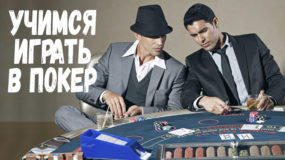Chess is a sports game recognized in 100 countries. In 1999, the IOC recognized them as a sporting event, and in 2018 they made their debut at the Winter Olympics. Chess is characterized not only by excitement, but also by powerful physical preparation and remarkable intellect of rivals.
Why learn chess? This helps to train mental abilities and mental skills, such as:
- Concentration of attention.
- Solving complex problems.
- Critical thinking.
- Pattern recognition.
- Strategic and tactical planning.
- Spatial imagination.
- Logic and analysis.
The game teaches that there is a consequence after each action. That the decisions made, based on the forecast and reasoning, have favorable results than impulsiveness and lack of thought.
In addition to gaining competition skills (in chess you will learn how to attack and defend at the same time), there are parallels between mathematics, music and chess.
Learning chess from scratch
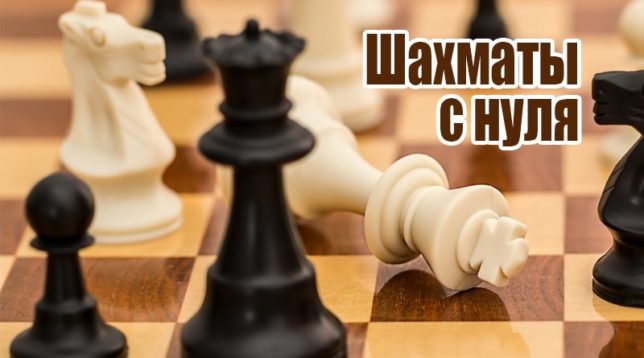
To learn how to play at home on your own, it’s not a bad idea to break down the rules into components. When learning moves, it’s easier to use only one piece on the board.
The best way to learn the game is to play. Losses are invaluable lessons and experience. You will soon find out that each figure has a certain value.
From the personal experience of many players, chess can be easily learned in online applications. Also, there are a number of online learning resources. It all depends on which method is preferable: to learn "on the go" or to start from scratch.
Now consider online learning options:
- Chess-online (Chess.com). The best free chess app for all types of devices and a website to start learning chess, playing online with opponents of your level. It analyzes your games perfectly with the help of a machine analysis function. This resource provides absolutely everything, from training from scratch and daily training for masters. Their video tutorials on discovery theory, mid-game tactics, check-and-mat strategies, pawn structures, attacking initiatives, etc. give an idea of how to maximize your game. The site will help anyone who is trying to learn the basics, and also wants to improve their abilities.
- Youtube channels. It is enough to print the necessary query for learning from scratch in Youtube search, as the system will offer a huge number of channels and video clips. Choose the most interesting material and watch with pleasure.
- Special literature. Buy a book that introduces the rules and basic principles of chess. I will not recommend a single one, as there are a lot of them, and most of them are wonderful. Look for one with a lot of pictures and little text. Most educational books are for children, and work for adults.
Description of figures, how they walk
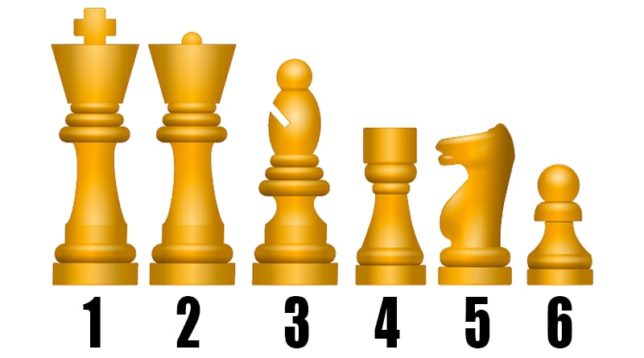
- King - the most important of all the figures is the one with the crown and cross.
- At queen there is also a crown - this is the second highest figure.
- Elephant - a figure with a pointed hat.
- Rook also easy to remember, it looks like a castle tower.
- Horse very easy to remember.
- Pawns - remember them will not be difficult, they are the most "small" and numerous.
Here are a few rules to learn from the start:
- The king must always be protected, he moves one cell in any direction.
- The queen is the most “universal soldier” who moves across the board in all directions.
- Elephants have a wide range of motion, but only strictly in a straight line, in perpendicular directions.
- Rooks are often underestimated by beginners. She moves “crosswise” along the board - diagonally, like a “lady” in checkers.
- The horse is good for thoughtful, unexpected attacks, its movement is known to all - the Russian letter "G" in all directions.
- Pawns are good at capturing enemy pieces. They are limited in movement - only one cell forward.
Video lesson
Various game techniques
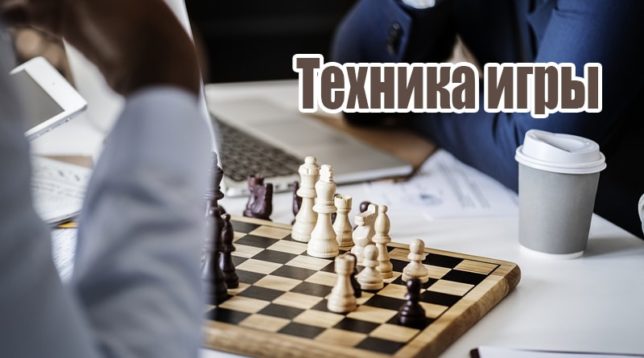
The main game technique:
- You choose the color of the figures (white or black, or other contrasting colors), the opponent takes the opposite color.
- You take turns making moves. White pieces go first.
- Goal: The first player to capture the enemy king wins the game.
Install the board correctly. The game is played on a chessboard consisting of 64 squares - eight rows and eight columns.
The strategy for a beginner is to capture as many important pieces of the enemy as possible so that it is easier to get to the king. This happens by moving the pieces across the squares where half of the opponent is. Capture a figure by removing it from the field.
You probably heard the word "Shah" right? This means that you (or your opponent) have placed your king (or your opponent) in a position in which he cannot move anywhere without being captured.
Now let's talk about pawns. There are some exceptions to the rule of one step: if a pawn has never moved before, it can move two squares on the first move. In addition, the pawn cannot capture the opponent in front of it. But if in front of her there is a figure of the enemy on the diagonal, she can go there to capture her. Another advantage of a pawn: if it reaches the other side of the board, where it cannot move forward, it can be exchanged for any other piece (except the king).
There is another special movement called castling. It concerns the position of the king and the rook. This may not be clear to a beginner at first, so you can learn it later when you master the basic rules.
Now use your pieces! In particular, do not let the horses and elephants linger on their positions, as they are useful at the beginning of the game.
Bring your king to a safe area. The king in the center of the board is the vulnerable king.
Run the center! - This is an important concept for newcomers. The 4 central squares are important for control.
Keep in mind that only a horse can jump through cages. Remember that all pieces can move back, except for pawns.
The whole strategy of the game is to make the enemy king trapped. No matter how you do it, you just need to do it once to win!
You cannot focus all attention on the attack, otherwise you can get a false sense of security and leave the opportunity for the opponent to use it. There are many ways to strengthen defense - to place your pieces in active positions (bishops and rooks are especially good). Carefully protect your half and, above all, keep the pieces coordinated. The last thing you need is to lose the queen due to the fact that you could not defend him or played in a hurry.
A poor batch opening usually leads to negative results. Work on moving your center to give way to elephants and use horses. Worry about the queen and the rooks later. There is not a single universal first move, although some of them deserve attention compared to others. There are players who prefer defensive, passive positions, or aggressive, dynamic strategies. In the early stages, focus on a defensive, passive game.
Analyze positions for tactics. Grandmasters usually benefit from tactics. Your goal is to outwit the enemy and find ways to maximize the use of your pieces. Learn the basics of forks, pins, skewers, and other tactical concepts.The tactical trainer feature at Chess.com is invaluable. Chess relies more on the search for identical models in different positions. Using these ideas will greatly increase your strength.
How long will it take to study
To speed up learning, try the following:
- Play chess for at least 1 hour daily.
- When you gain more experience, connect tactical puzzles for 30 minutes, and 30 minutes of live chess per day.
The study itself will take about 1 month, if you pay attention to 30-60 minutes of the game daily. Further progress will not be long in coming, as the game will completely conquer you!
How to teach a child to play chess
In many ways, educating children is an easier task than adults. In the age of affordable Internet, children can easily learn to play chess on their own. The tactics above are for players of all ages.
Training in sections
In various circles and sections they are taught to play chess “officially”, that is, with an explanation of all chess terms and the names of strategies. Provide and show all possible tricks and moves. Self-taught, as a rule, play intuitively, building their own logical chains. They are not strong in terms, but at the same time they play at a very high level.
Famous chess players of the world and Russia
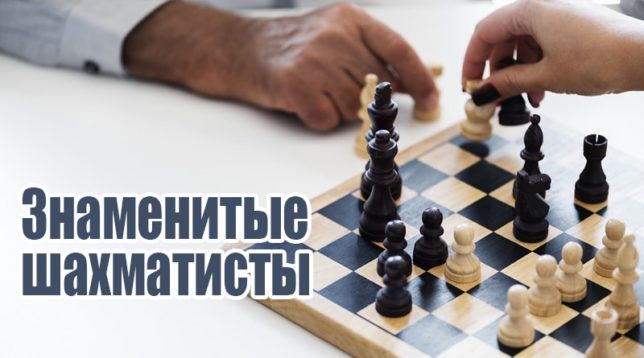
- Sisters Polgar, Judit and Susan are Hungarian masters. The youngest of the sisters, Judit (41), at the moment, is the strongest chess player on the planet. Her advantage is that she participates and wins only in men's championships. Judith received the title of male grandmaster at the age of 15, surpassing the achievements of many venerable champions. Her older sister Susan is now developing chess sports in the United States, she is also an international master.
- Antoaneta Stefanova - Bulgarian champion of the world and Europe in chess and rapid chess 38 years. In 2002 she became an international grandmaster.
- Xie Jun is a Chinese chess player, honored coach and world champion (47 years old). She became a champion at the age of 10, and began playing with 6.
- Alexandra Kosteniuk is the champion of Europe and Russia. Her motto is: “Chess is great” and “Beauty and mind are inseparable.” Guided by it, she promotes chess, being a model and “ambassador of chess”, trying to spark interest in this game all over the world.
- Anatoly Karpov (66 years old) and Garry Kasparov (54 years old) are Russia's most famous grandmasters. At present, they are actively engaged in political activities. In the past - repeated champions of the world, Europe and Russia.
- Khalifman Alexander (52 years old) - three-time winner of the World Chess Olympiad. Now he trains the younger generation, is the author of books on chess strategy.
- Magnus Carlsen (27) is the current absolute world champion from Norway, one of the youngest grandmasters on the planet.
- Anand Viswanathan (47 years old) is the current Indian strongest world champion in rapid chess. Anand plays very fast, spends minimal time on thinking over moves, even competing with the strongest chess players in the world.
How to become a chess professional
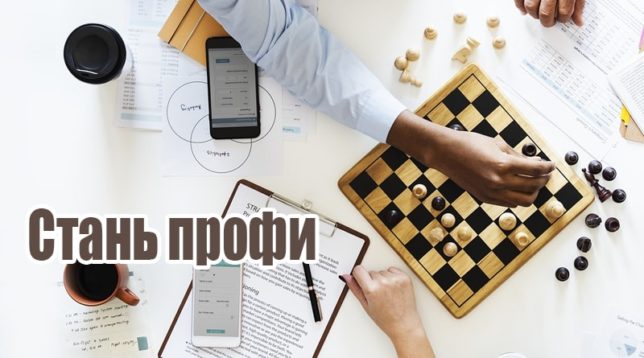
Have you already learned all the rules of chess and are standing in the way of perfection? Here's what you need to do next:
- Learn algebraic notations. This system is used by chess players to record games or the position of pieces on the board in order to read and recreate any game in the future.
- Learn the value of shapes. Not all chess pieces are equally strong in a game. Learn to determine their value and significance in a particular party, then you will understand whether it is worth sacrificing it.
- Watch and analyze the games of the grandmasters, past and present. Watch the professional game between the masters.
- Start by exploring the games of antiquity from the 1600s to the early 1900s; they are easier to understand. Some examples of the masters of that era: Adolf Andersen, Paul Morphy, Wilhelm Steinitz, Johannes Zuckerert, Emanuel Lasker, Jose Raul Capablanca, Alexander Alekhine.
- Solve puzzles that will help you recognize and identify tactical capabilities and your weaknesses.
- Learn to use the chess engine and artificial intelligence for analysis.Today, the most useful tool for players is computers. For Windows and Linux, Arena is a popular GUI. With it, you can watch games in PGN format, which can be downloaded from different sites. Record your games for later analysis. Do the same, watching the live game, comprehend the position yourself.
- Follow the professional chess world. Know current champions and world champions, venerable and young players. Stay tuned for world tournaments.
Useful tips and interesting information.
Join a local chess club. Playing face-to-face with an opponent and being part of the chess community is a way to become a professional. Fight opponents of your level and those who are stronger. Analyze each game, memorize key moves in winning and losing games.
And a few more tips:
- Solve more chess puzzles.
- Use horses efficiently and often.
- Read books on chess, biographies of famous masters.
- Learn from losing.
- Analyze the moves.
- Reflect on the game of the enemy.
From now on, start playing: lose and repeat again. Always challenge yourself. Training may take a couple of years, but the satisfaction that you get will be worth the effort.
Never lose hope or give up if you lose! Defeat is a stepping stone to success!









